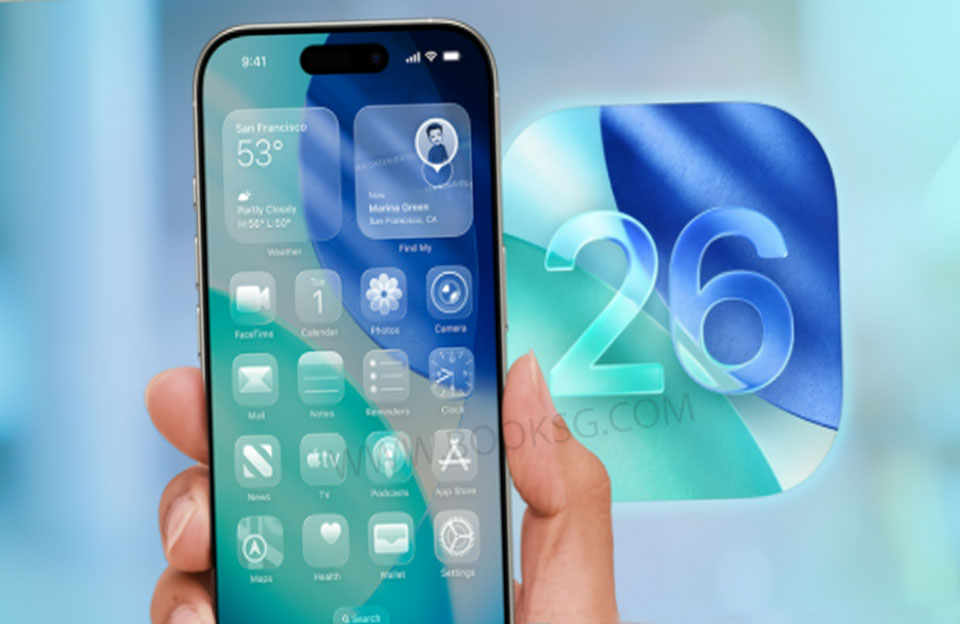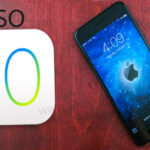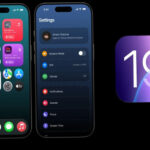Apple announced iOS 26 on June 9, 2025,as its fifth way of mobile operating system. Apple’s new year-based versioning system: This release is the first to use the new Apple 1-year-equivalent naming model, and aligns iOS development with typical calendrical annual periods.
Liquid Glass: iOS 26 introduces the first notably visual change to iOS since the introduction of iOS 7 in 2013 Liquid Glass, inspired by the aesthetic and performance of glass; one which offers a more dynamic and fluid immersive visual experience. This would often include translucent layers, depth effects or smoother animations that create a fluid transition between screen elements.
It is the design language of our modern age — a unified visual identity across all Apple platforms (iOS, iPadOS, macOS, watchOS, tvOS and visionOS). For the first time in Apple’s history, all of its operating systems now have a unified, more consistent design language and it represents just how well-integrated and harmonious the Apple ecosystem is becoming.
Meanwhile, Apple also took the strategic decision to discontinue compatibility with older hardware in iOS 26 by dropping support for the iPhone XS models and iPhone XR. With this move, it totally leaves all devices concerning A12 Bionic so that in the days coming ahead future updates can avail from the full power of the facilities and features of new hardware.
iOS 26 is an aggressive leap into Apple’s idea of a harmonious, future-proof virtual experience on all its devices everywhere.
1. Why is it called iOS 26 instead of iOS 19?
Apple decided to rename its software versions to better align with calendar years. Instead of continuing with iOS 19, the company jumped directly to iOS 26. This naming reflects the year 2026, when the software will remain most relevant, and also unifies version numbers across Apple’s platforms such as iPadOS, macOS, watchOS, and visionOS.
2. When was iOS 26 announced and when will it be released?
iOS 26 was announced during Apple’s Worldwide Developers Conference (WWDC) in June 2025. Right after the announcement, a developer beta became available, with a public beta expected in July. The final release is scheduled for September 2025, which will coincide with the launch of the iPhone 17 series, following Apple’s traditional release cycle.
3. Which iPhones will be compatible with iOS 26?
iOS 26 will support iPhones starting from the iPhone 11 series, including the iPhone SE (2nd generation and newer), all the way up to the iPhone 16 lineup. However, older devices such as the iPhone XR, XS, and XS Max will no longer receive updates since their A12 Bionic chip does not meet the required performance level for the new features in iOS 26.
4. What design changes does iOS 26 introduce?
Apple has introduced a completely new design language called Liquid Glass with iOS 26. This includes translucent backgrounds, glass-like floating menus, and more fluid animations. Icons are smoother, navigation bars are semi-transparent, and the entire interface feels lighter and more futuristic. It’s the biggest visual change since iOS 7 and makes the iPhone feel more consistent with Apple’s other platforms.
5. What updates are coming to core apps like Phone, Messages, and Camera?
The Phone app has been redesigned with a cleaner look and now includes features like Call Screening, which asks callers to identify themselves, and Hold Assist, which alerts you when a support agent is ready. The Messages app now supports polls, typing indicators in group chats, custom chat backgrounds, and improved spam filtering. The Camera app also gets a simpler layout with quicker access to resolution and format controls, along with smoother switching between modes.
6. What’s new with Apple Intelligence in iOS 26?
Apple Intelligence has become far more powerful in iOS 26. Live Translation now works system-wide in apps like FaceTime, Messages, and Phone, and all translations happen securely on the device. Visual Intelligence can identify objects or text on your screen and offer instant information or actions. Creative tools like Genmoji, Image Playground, and writing assistance are now integrated into the system, making iOS 26 smarter and more helpful than ever.
7. How does iOS 26 improve CarPlay?
CarPlay in iOS 26 introduces a sleek transparent interface that blends navigation, music, and live information like sports scores or delivery tracking into a single view. Calls now appear as compact banners, widgets are supported for quick access, and pinned conversations are available for easier messaging. A new version called CarPlay Ultra extends these features into instrument clusters and full car displays, making the driving experience more connected.
8. Are there any new apps or tools in iOS 26?
Yes, iOS 26 introduces Apple Games, a hub that organizes all of your games, tracks progress, and connects you with friends. Apple Music gains live lyric translation and AutoMix transitions, while Maps adds a “Visited Places” history and smarter route suggestions. The Wallet app also becomes more powerful, offering real-time flight updates, transit details, and improved travel tools.
9. What security and privacy improvements are included in iOS 26?
iOS 26 enhances security with new permissions and protections. A new Wired Accessories permission prevents accessories from accessing your phone while it’s locked. Blocked contacts are now centralized across all apps. Apple also introduces Recovery Assistant, a feature that helps you recover your device in case of startup failures. To prepare for future threats, Apple has enabled quantum-secure TLS encryption to keep communications safe.
10. What are some extra features worth noting in iOS 26?
Beyond the major updates, iOS 26 adds several small but useful features. The lock screen now offers dynamic 3D effects and new wallpapers such as Shadow and Dusk. Charging time estimates appear directly on the lock screen. Widgets are more customizable, Notes supports new export formats, and parental controls are stronger. Accessibility has also been expanded with better reading modes and audio tools, making iOS 26 more inclusive.




Pingback: iOS: The Evolution of Apple’s Mobile Operating System - Mobile Updates Hub | New Phones, Software, and Tips